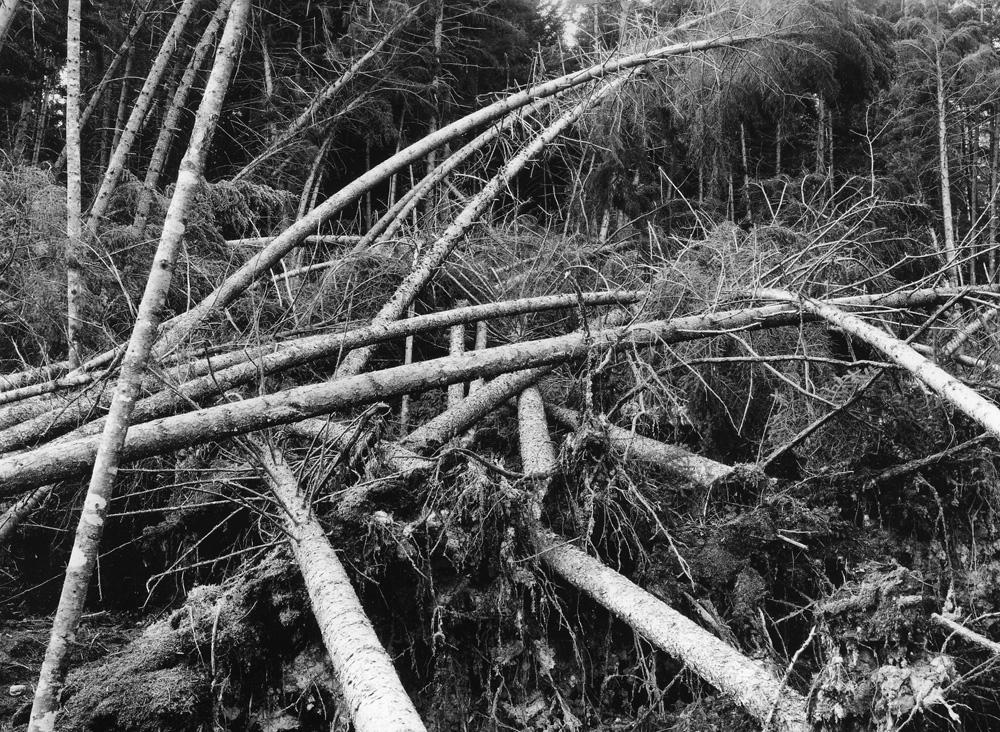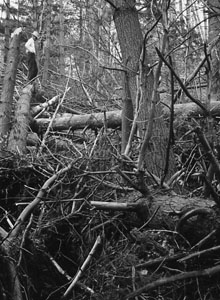The Great Hurricane of 1938
June marks the official start of the 2010 Atlantic hurricane season, which this year is forecast to be a busy one. As deadly and destructive storms, hurricanes are also major agents of landscape change and forest disturbance in many parts of the southern and eastern United States. The Forest History Society library and archival collections contain information on past hurricane damage to people, physical structures, and forested landscapes.

Forest impact from the 1938 Hurricane in New England.
One of the biggest hurricane-induced forest disturbances in the U.S. occurred in New England in 1938. Hurricane number 4 of the 1938 season (Atlantic storms were not given names until 1950), blew a devastating path through the New England region in September of that year, affecting New York, Rhode Island, Connecticut, Massachusetts, Vermont, Maine, and New Hampshire. The storm killed over 700 people, destroyed thousands of homes, and caused forest damage [click to view map] in 35 percent of New England’s total land area.
Hurricane impact on forests comes in many forms. The storms greatly affect forest structure, forest density, species distribution, and more. The immediate aftermath of the 1938 hurricane saw extensive areas of downed trees, which created dangerous fire hazards throughout the region. Civilian Conservation Corps (CCC) and Works Progress Administration (WPA) crews were used in the hazard removal and clean up efforts, and the Northeastern Timber Salvage Administration (NETSA) was created to salvage the usable timber. NETSA helped harvest, process, purchase, and store timber, as well as set stable timber prices, all helping to minimize losses to effected landowners. Even with these large-scale responses to the 1938 hurricane, this single storm greatly influenced the long-term makeup of the New England forest landscape.
For more information on the 1938 New England Hurricane, the Forest History Society Image Database features nearly 150 photos of the storm’s aftermath and clean-up efforts (browse gallery). The FHS U.S. Forest Service History Collection includes the official USFS Report on the 1938 hurricane, as well as other materials on the storm’s impact and the timber salvage efforts. An oral history with Earl S. Peirce discussing the timber salvage programs following the 1938 hurricane can be found in the FHS library. An article by David R. Foster in the Fall 2000 issue of Forest History Today, “Conservation Lessons & Challenges from Ecological History,” looks at the use of history in ecological research, and mentions how the 1938 hurricane influenced researchers to study natural disturbances.

Private land in New Hampshire following 1938 hazard reduction and timber salvage.


